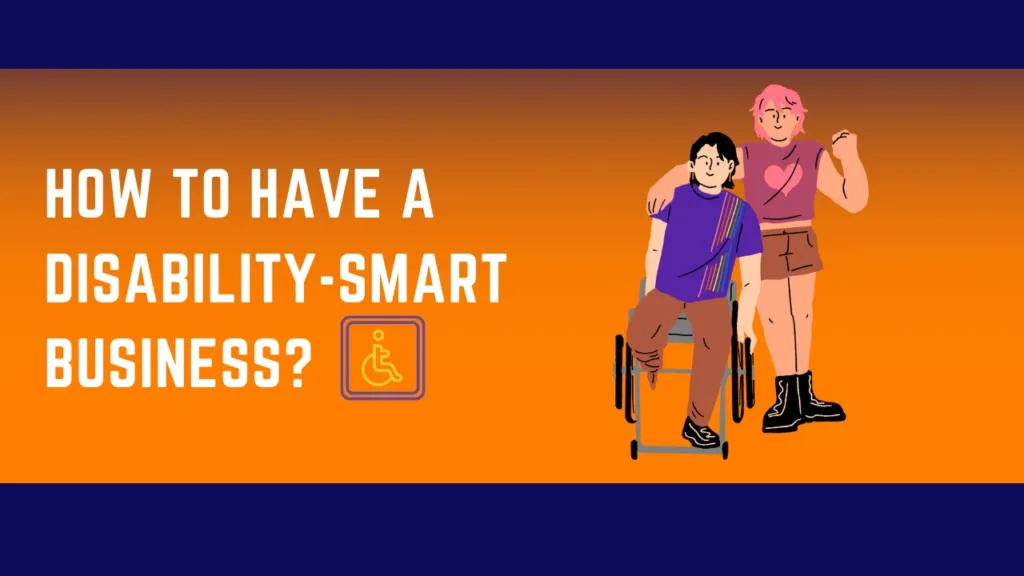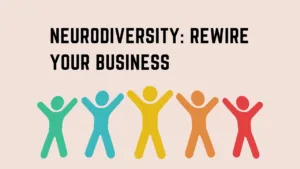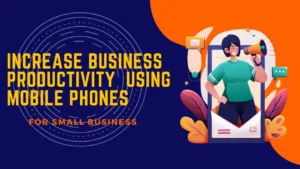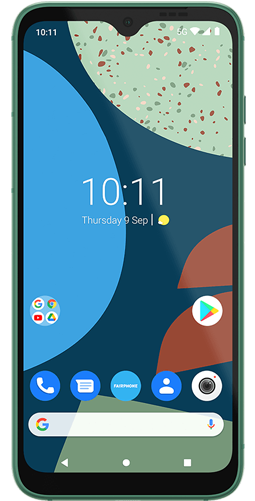For smaller businesses, the practical application of offering employment to individuals who are registered disabled, can appear even more overwhelming and unachievable.
Even within a social environment, it can be difficult to know how to interact with and support people who have a higher level of need, so how do we go about this in the workplace?
In a fair and inclusive world, most business owners would agree that every employee should be offered the same opportunities, and the same level of support and training as each other. So, how can we achieve this when it comes to employees who are registered disabled?
Let’s flip this uncertainty on its head once and for all, and focus not on disability, but rather on ability. What are a prospective employee’s abilities, how can they benefit your business, and, just as importantly, how can your business benefit them?
It’s a bigger world out there…
In the 2021/2022 financial year, over 16 million people in the UK were registered disabled: that’s almost a quarter of the UK population. What that statistic means for businesses, is that a large percentage of our customers, employees and business consultants are likely to have a disability of some kind.
Recent statistics from ONS also shows that there has been an increase in younger people identified as disabled according to the current guidelines provided by the Equality Act. Therefore, for our younger generation, is it especially crucial to grow businesses that are inclusive for people with additional needs, both for our employees and our customers.
However, the most pertinent statistic of all with regards to workplace inclusivity is that 23% of working-age adults were registered disabled in 2021/2022. That’s almost a quarter of working-age people! So, let’s open our doors…
What types of disability are there?

When we consider the term ‘disability’, there’s a high chance we will think of a person in a wheelchair, which, in actual fact, is only 8% of the disabled population.
Disability includes both mental and physical impairments. Under the 2010 Equality Act, a disability is a ‘physical or mental impairment that has a ‘substantial’ and ‘long-term’ negative effect on your ability to do normal daily activities.’
Types of disability include the following: visual, sensory, developmental, physical, mental, speech, learning, hearing, and the list goes on.
Often it is obvious that a person has a disability, such as with mobility or sight impairments, but some disabilities, such as autism or other neurological conditions, can remain mostly hidden until such time that they become evident.
So, how can we, as small businesses, ensure that we are as inclusive and as welcoming to such a potential range of needs within our workforce? Is this even achievable? Aren’t we certain to unintentionally fail someone at some point and will this be our fault?
How to have a disability-enabled business…
With a smaller business, you are more likely to either be your own boss or know your own boss pretty well. You will, fundamentally, be thinking along the same lines. Therefore, new strategies and ideas can be implemented quicker and more easily than in a larger organisation, and the people who make those decisions will know the people they benefit on a much more personal level. So, if something’s not working well, a new approach doesn’t have to be far away.
Smaller businesses are, therefore, more agile and adaptable, making them ideal workplaces for people with additional workplace needs. A smaller business can offer a friendly and understanding work environment in which a person with a disability can feel more comfortable sharing concerns or asking for extra support. There’s nowhere to hide and there should be nothing to hide when the correct level of support is on offer.
Ensure your recruitment process is accessible…
Don’t just rely on recruitment agencies to source your workforce. Many agencies are inaccessible for people with higher levels of need: they can be intimidating places or physically unreachable for some. Spend some time within your local communities: visit recruitment fayres, disability support groups and college career events. Let everyone know that the door to your business is open to everyone.
Tell your current employees about your aspirations to be an inclusive employer. They may already know of a friend or family member who is trying to get back into work or move across to a more disability-friendly employer.
Ensure that job adverts, job descriptions and application forms are available in Braille or large print for visually impaired applicants. Ensure that these adverts and job descriptions clearly state what essential qualities and abilities are required for the advertised role, giving everyone a fair understanding of what is desirable to you as an employer.
Offer applicants the option of telephone or Zoom interviews, taster days or workplace visits throughout the hiring process, and always ensure that wheelchair access, hearing loops or computer access is available on the day.
Most importantly, give applicants the opportunity to discuss their physical and mental needs with you right from day one, so everyone understands what is expected of them and what type of support is required.
But what if an applicant doesn’t divulge their disability on day one? Alternatively, what if an existing employee receives a disability diagnosis? What implications does that have for your duty of care as an employer?
Start the conversation…
Many job applicants and current employees will be sceptical about declaring a disability during the recruitment process for fear of discrimination or potentially being underpaid. Sadly, across the UK, people with disabilities are paid around 15% less than those without a disability.
Some will admit that they feel grateful just to be given a job at all. So, as stated earlier, that’s almost a quarter of working-age people who feel they just must settle for what they’re given, which can often be far beneath their abilities and their potential.
However, it can be daunting to welcome someone into your workplace who has a registered disability. You might be anxious about saying the wrong thing or causing offence or distress. But remember, there are many types of disability out there, and you can’t expect to be an expert in all of them. So, admit it. Be honest; start the conversation…
Enable your managers to offer adequate opportunities for all employees to speak about the support they need in the workplace. Provide training in specific needs where relevant, such as autism awareness training (watch out for our forthcoming blog on neurodivergency in the workplace), offer mental health workshops, sign language courses, and, most of all, be a good listener and observer of the people you work with.
A disability diagnosis can change people’s lives for the better, but a diagnosis isn’t just for the disabled individual; a diagnosis is there to empower those around them to support them better, so enable your workplace to better facilitate this for everyone.
Enable your physical workplace environment…
Believe it or not, there are many non-laborious changes you can make to the physical workspace that can make it a more tolerable and productive place for everyone, including those who have a disability. It is far more costly to replace and retrain an employee than it is to make physical changes to the workspace.
We all immediately think of mobility and wheelchair access, which, naturally, are vital to employees, visitors, and customers. But in addition, consider offering employees with mobility issues a ground floor desk space, or a remote working arrangement. Provide them with the office equipment they need, such as supportive desk chairs, work screens, or ear sound defenders.
Talk to your employees about their journey to and from work and what you can do to make this less stressful for them. The easier it is for people to get to and into work, the less sick leave you will notice across your business, and everyone wins.
For neurodivergent employees, such as people with autism or sensory processing difficulties, look at changing the lighting within the office, introduce sound masking solutions and/or quiet spaces for them to use when needed. Encourage regular physical breaks for those who need them; even a five-minute walk around the carpark can mean someone with sensory needs can work and excel in an office environment or customer-facing role that they couldn’t otherwise tolerate.


It’s not a problem; it’s a privilege…
Have you ever heard of the Billy Bookcase? Well, IKEA’s naming system was created by Ingvar Kamprad, the company’s founder, whose learning disability meant that he had trouble remembering the order of the numbers in item codes. So, he swapped the numbers for names and the much-loved Billy Bookcase was born.
Think of a CEO of one of the top global companies. Chances are, they will have a learning disability or be neurodivergent: Steve Jobs and Elon Musk, to name just two.
So, is it true that an innovative business is a diverse business? Surely, we don’t want a company of robots; we want real people working with us who interact with the world differently to each other, see patterns and ideas where others don’t, have had different life experiences, are dynamic, passionate, energised; talented. Different people: different skills.
No one is saying you should employ someone just because they have a type of disability; you employ the person who you think can do the job better than the rest, regardless.
Furthermore, by being known as a disability-friendly employer, doesn’t mean you’ll suddenly have someone with a visual impairment applying for the role of lorry driver. You won’t be left more vulnerable as an employer; you’ll just have more potential to choose from.
But isn’t a disabled person more likely to take time off sick? Not necessarily. Disability is rarely caused by illness, but it is always due to an impairment, which, very often, can be accommodated within the workplace. A robust and comprehensive sickness policy can provide guidance for everyone in their respect, together with the choice of inclusion in group healthcare plans and insurances.
From a purely practical and continuity perspective, supporting people in the workplace who have a higher level of need, can also encourage loyalty amongst those employees. Employees are less likely to look elsewhere for alternative roles or promotion possibilities if they know you are meeting their needs, saving you the time and hassle of re-hiring and re-training someone new.
By including people with disabilities in our talent pool, we can attract more people as part of our recruitment process, discover highly-skilled individuals that may prove a real asset to our business, increase problem solving, give our productivity a boost, and be recognised as a fair and approachable employer.
Where’s the disability, really?
If, after all that, you’re still wondering whether enabling your business for people with disabilities is worth the while, let me put it this way.
A work environment that supports the inclusion and productivity of someone with a disability, is a work environment that supports the inclusion and productivity of every employee in your business. Just because someone you work with isn’t registered as disabled, doesn’t mean they don’t have specific needs that require recognition.
Every employee will benefit from a fair and accessible recruitment process. Every employee will benefit from having the correct office/work equipment, a less stressful commute, a quieter and calmer workspace, line managers who listen and observe and support their needs, peace-of-mind health insurance and mental health training. Every employee will benefit and so will your business.
The world is disabled, not the individual.
Enable your business. Open your doors.
Give Your Business the Edge…
We’re not just tech enthusiasts. Read our blogs to learn about other ways to maximise your business’s potential.
Connect with your Employees…
Get business mobile phones for your employees.
Learn how work-life balance can help in achieving better results.







